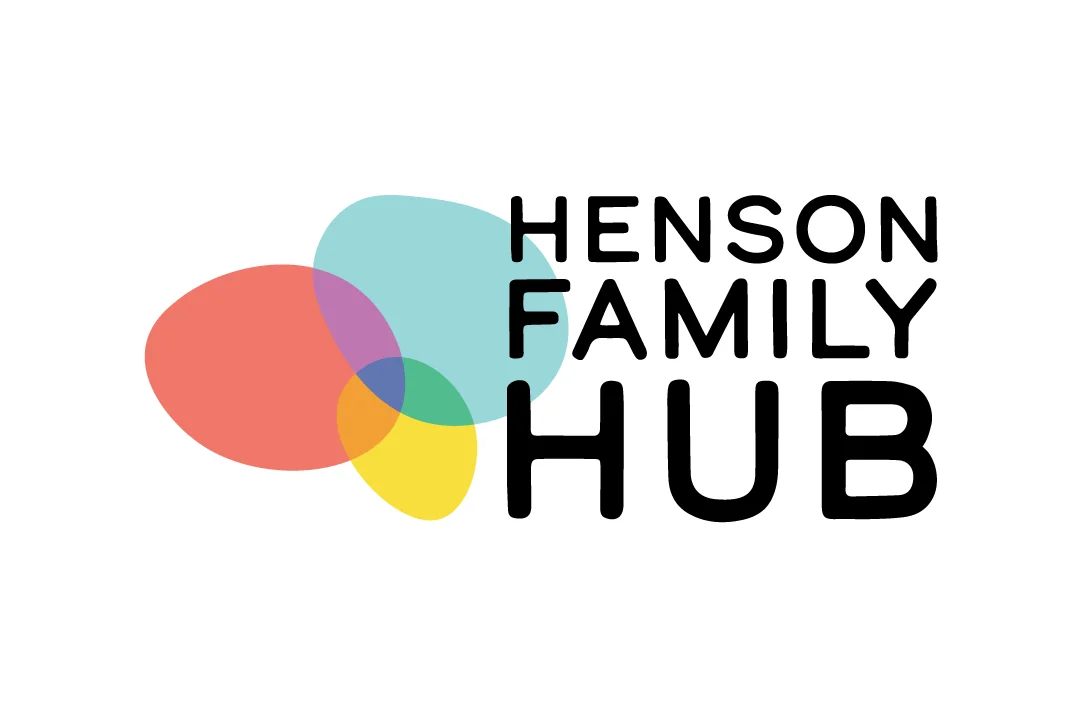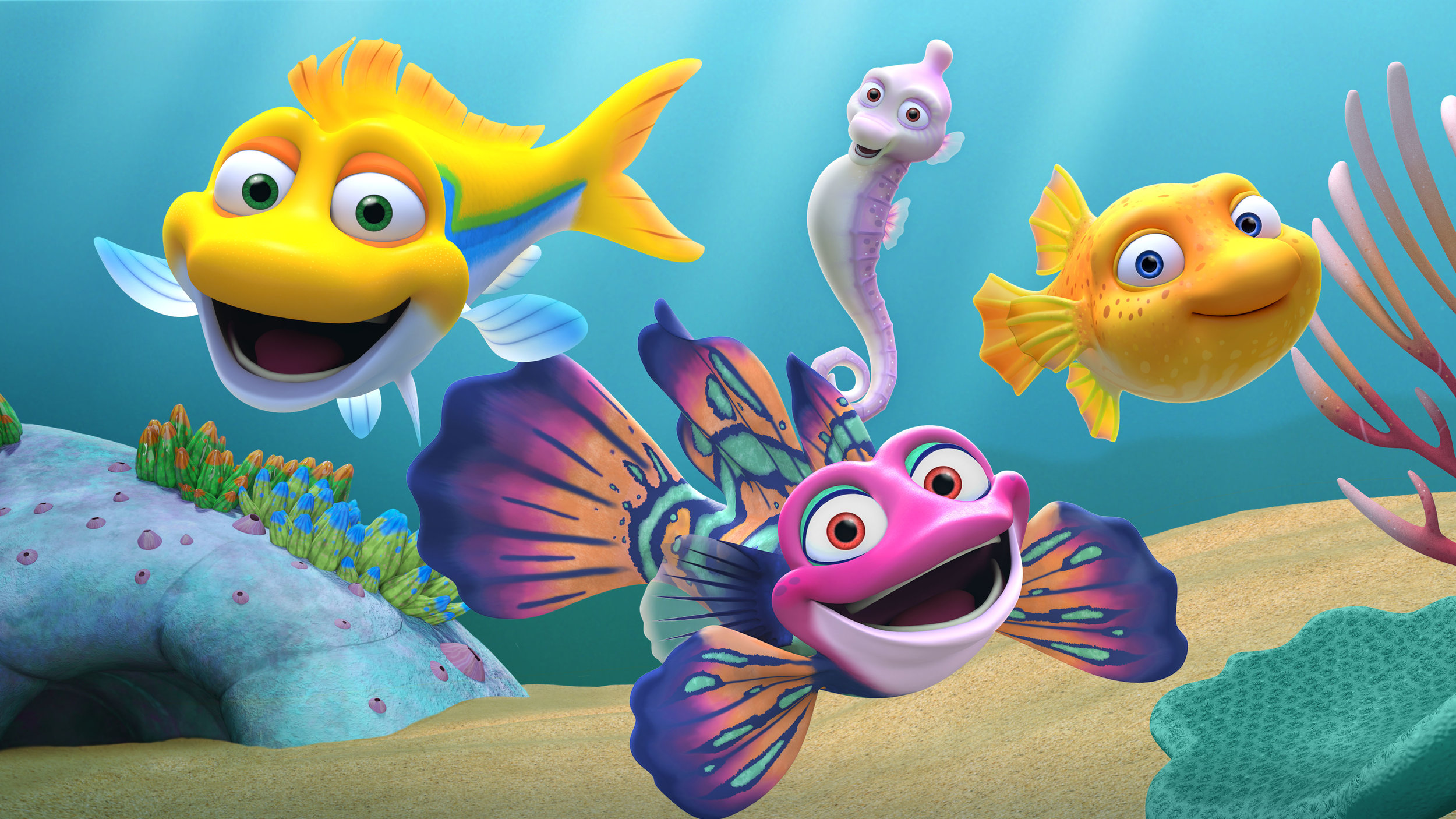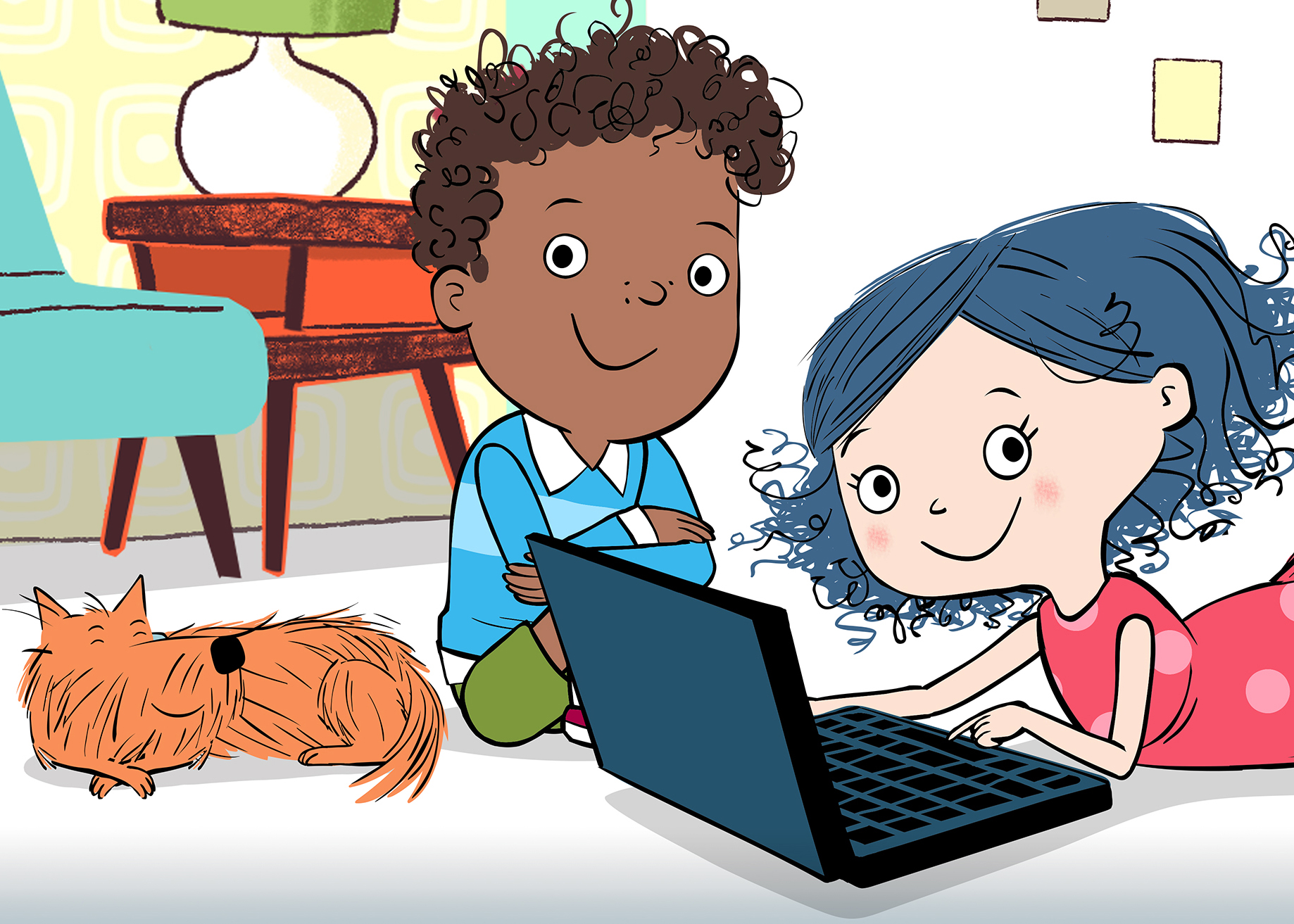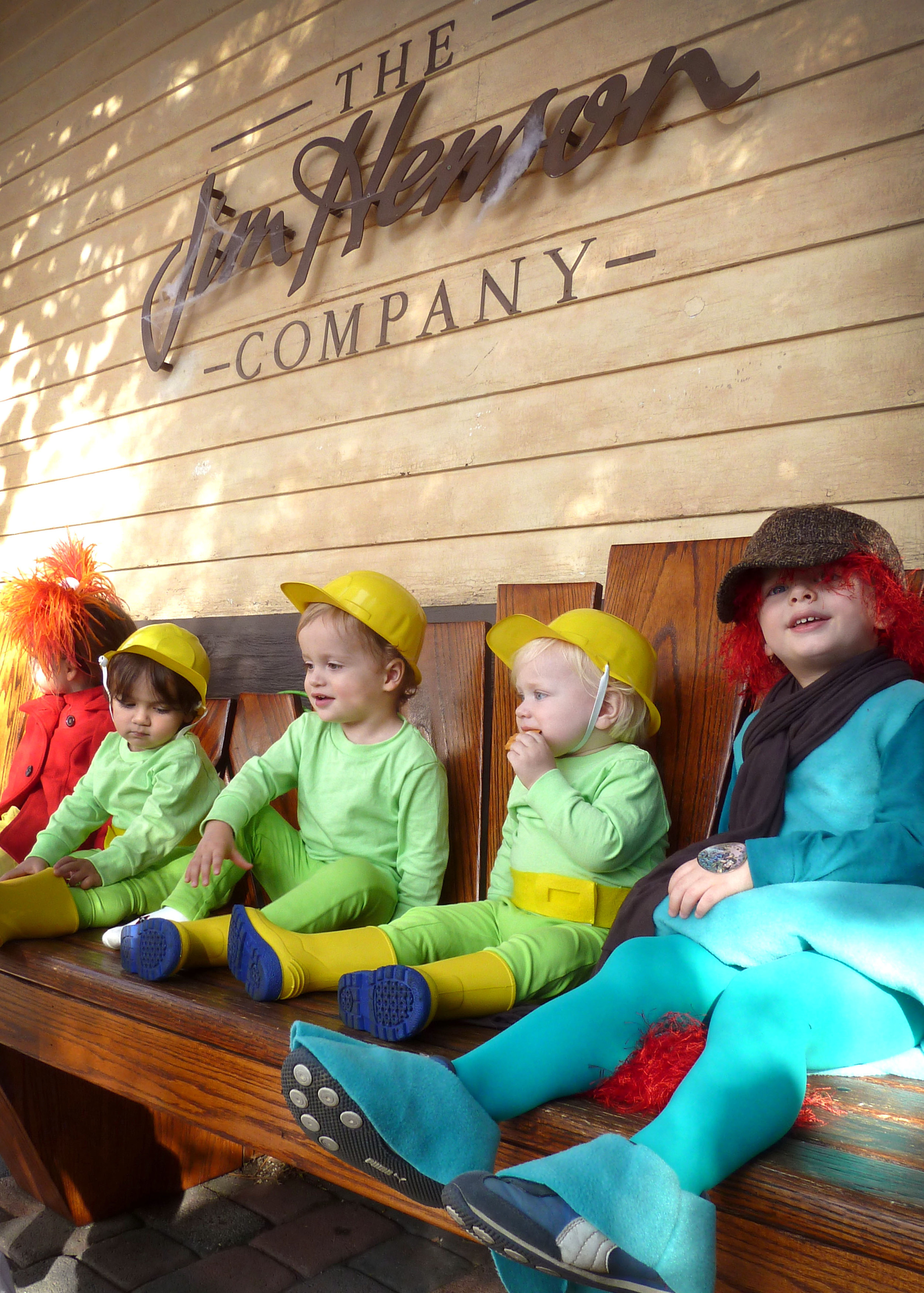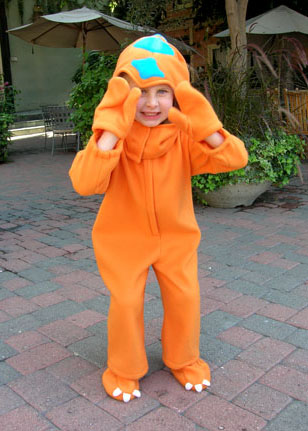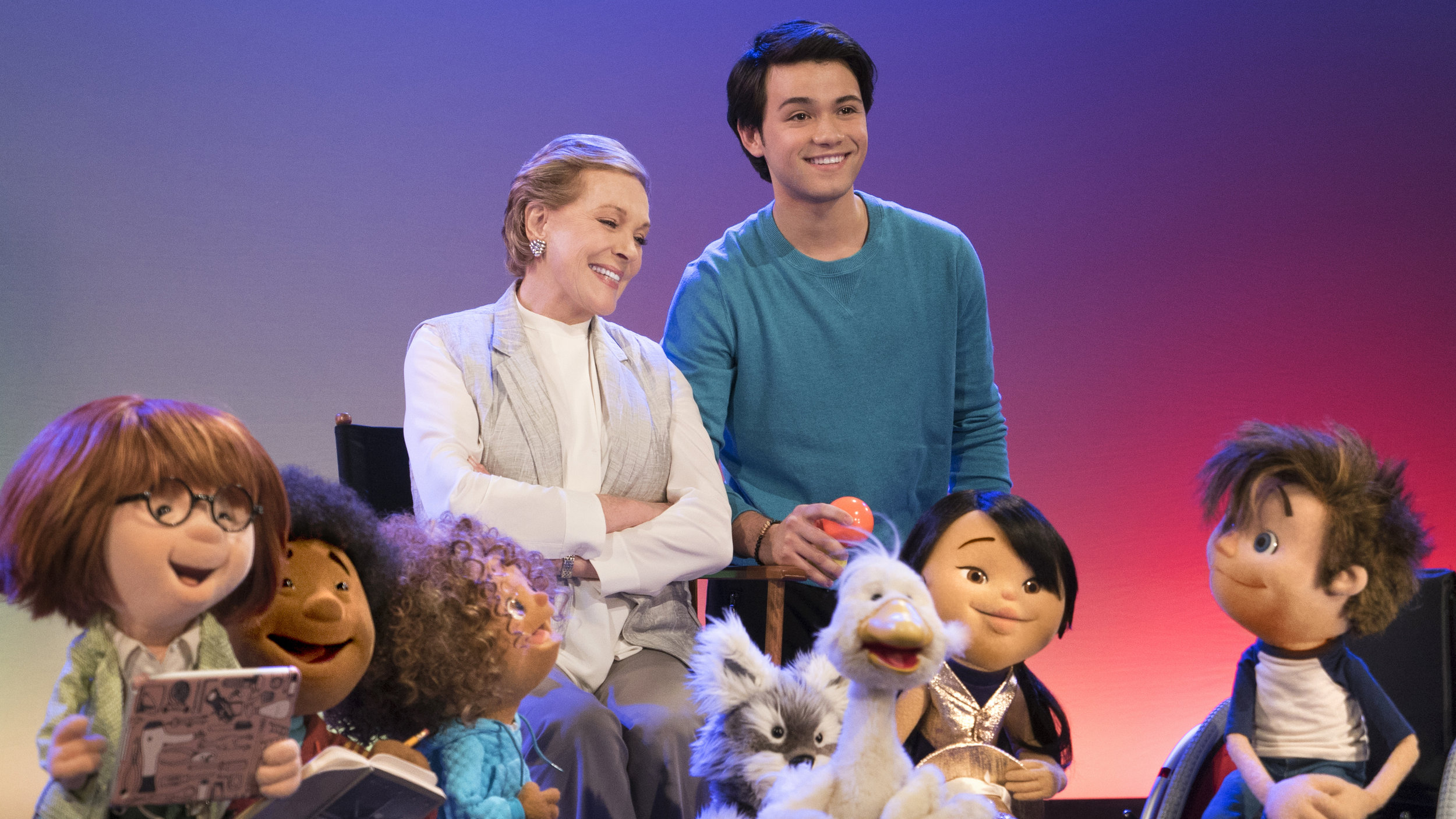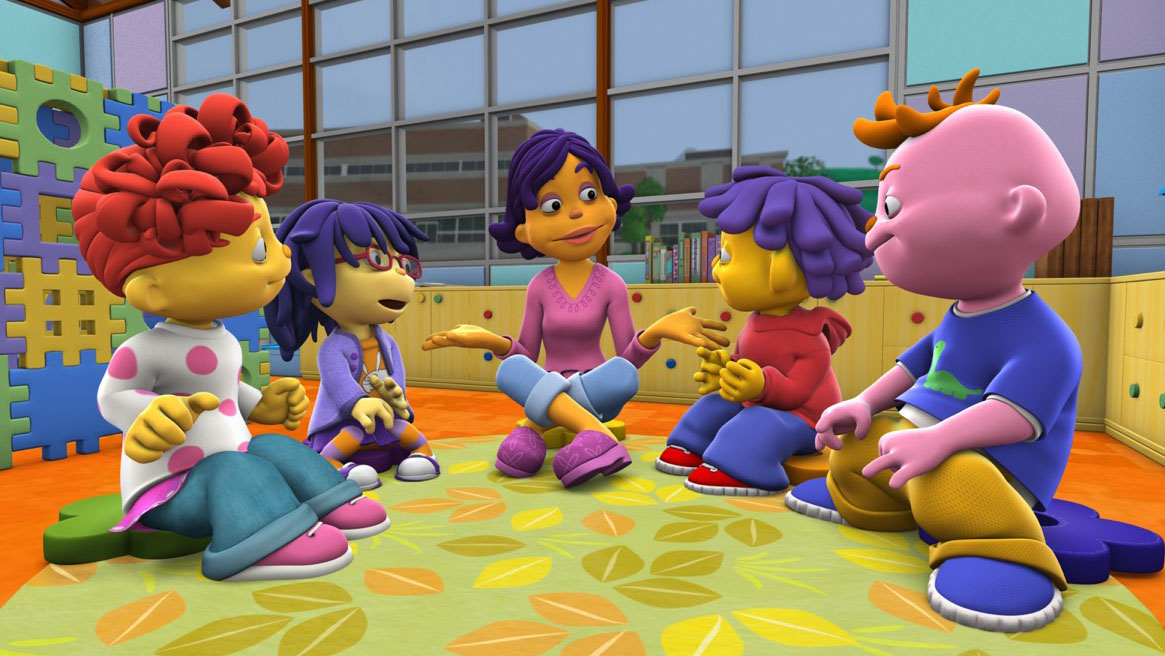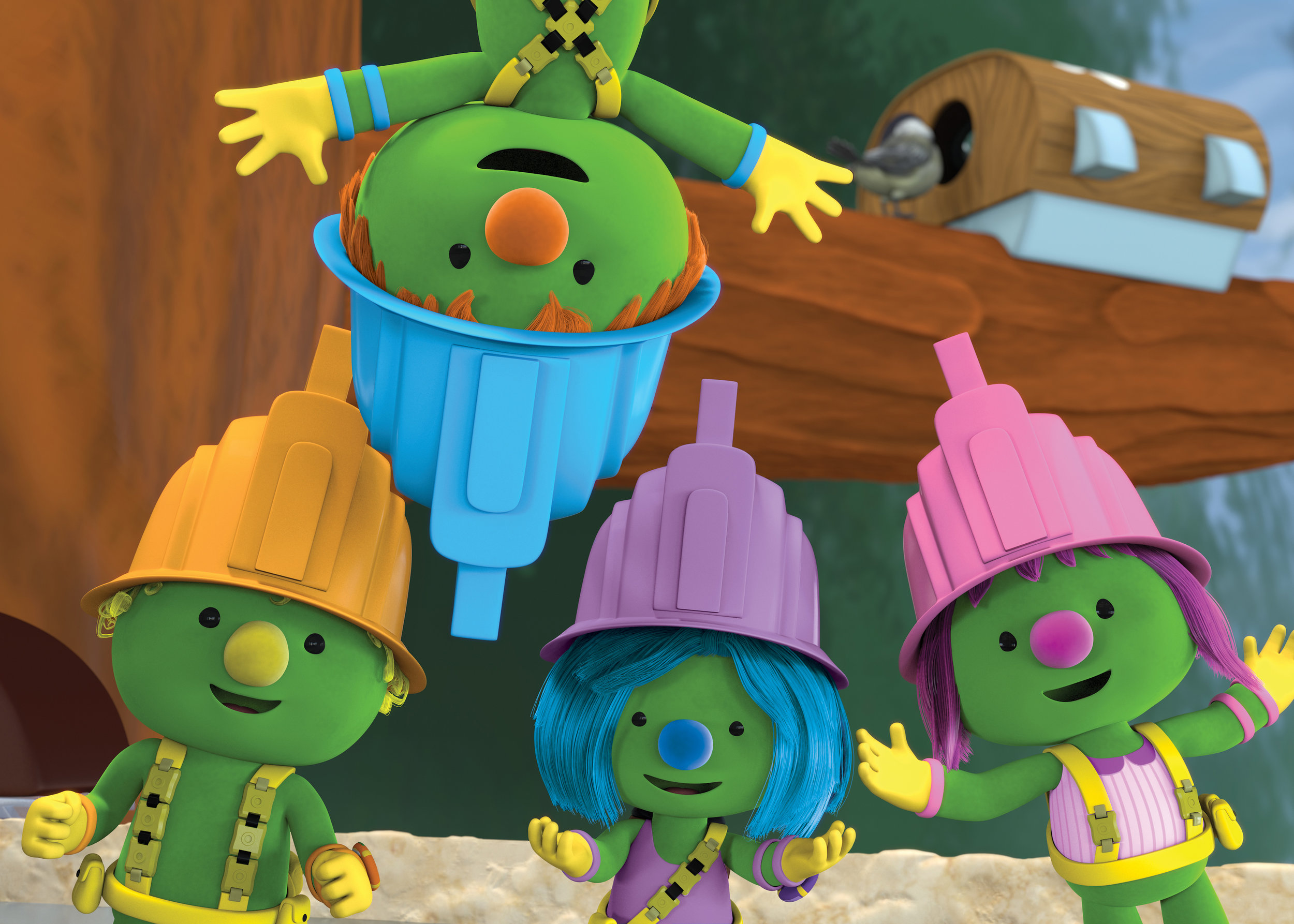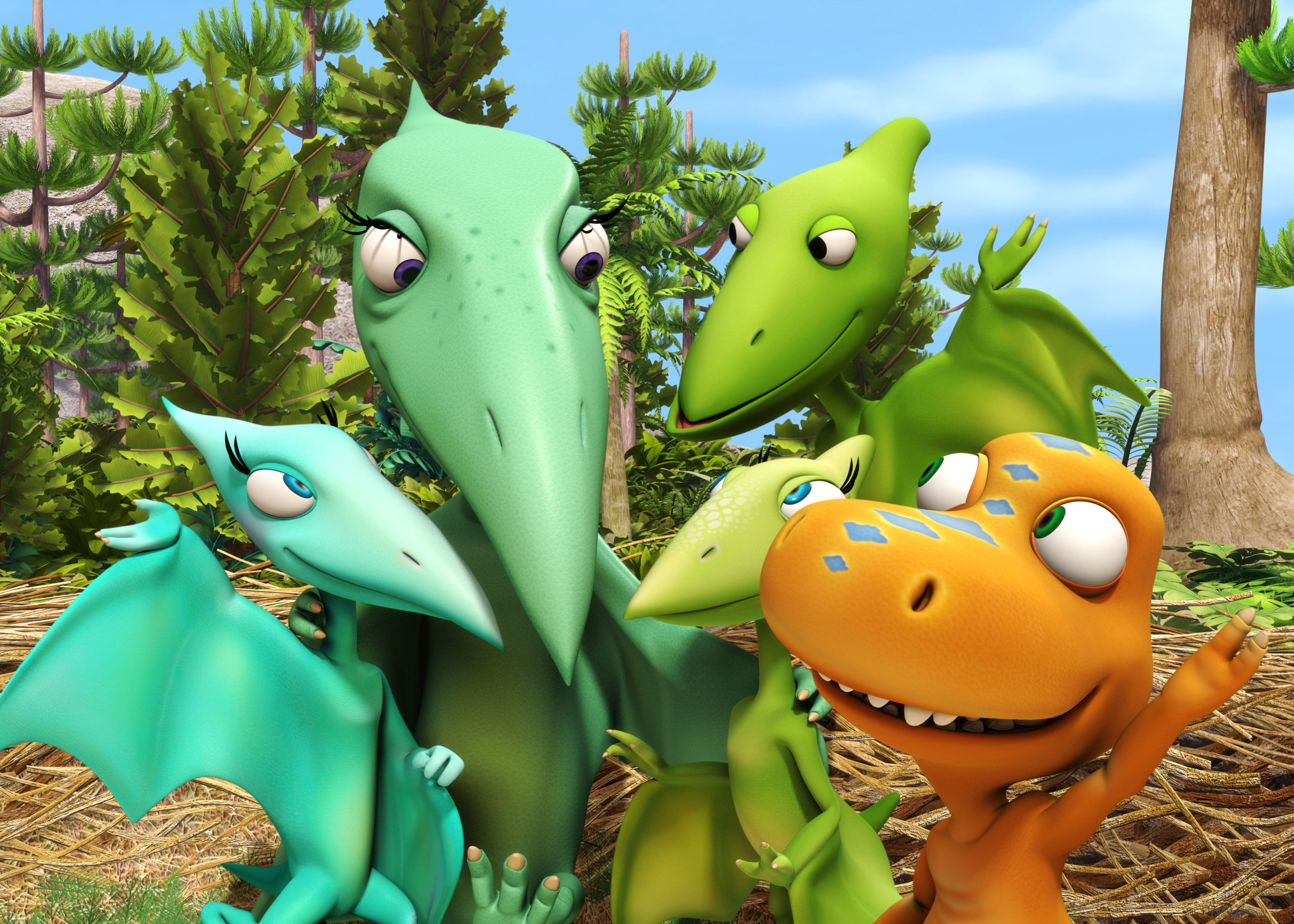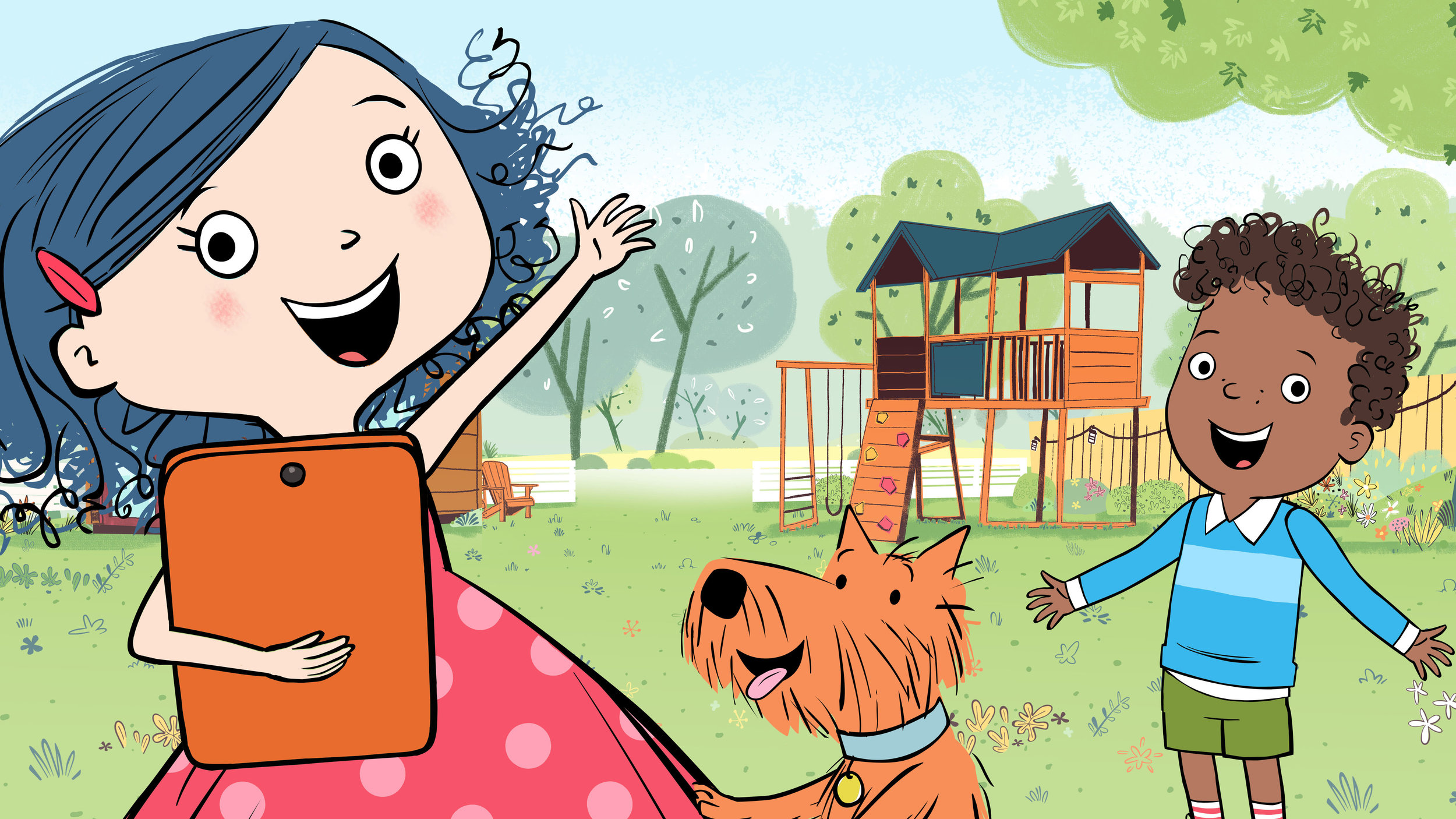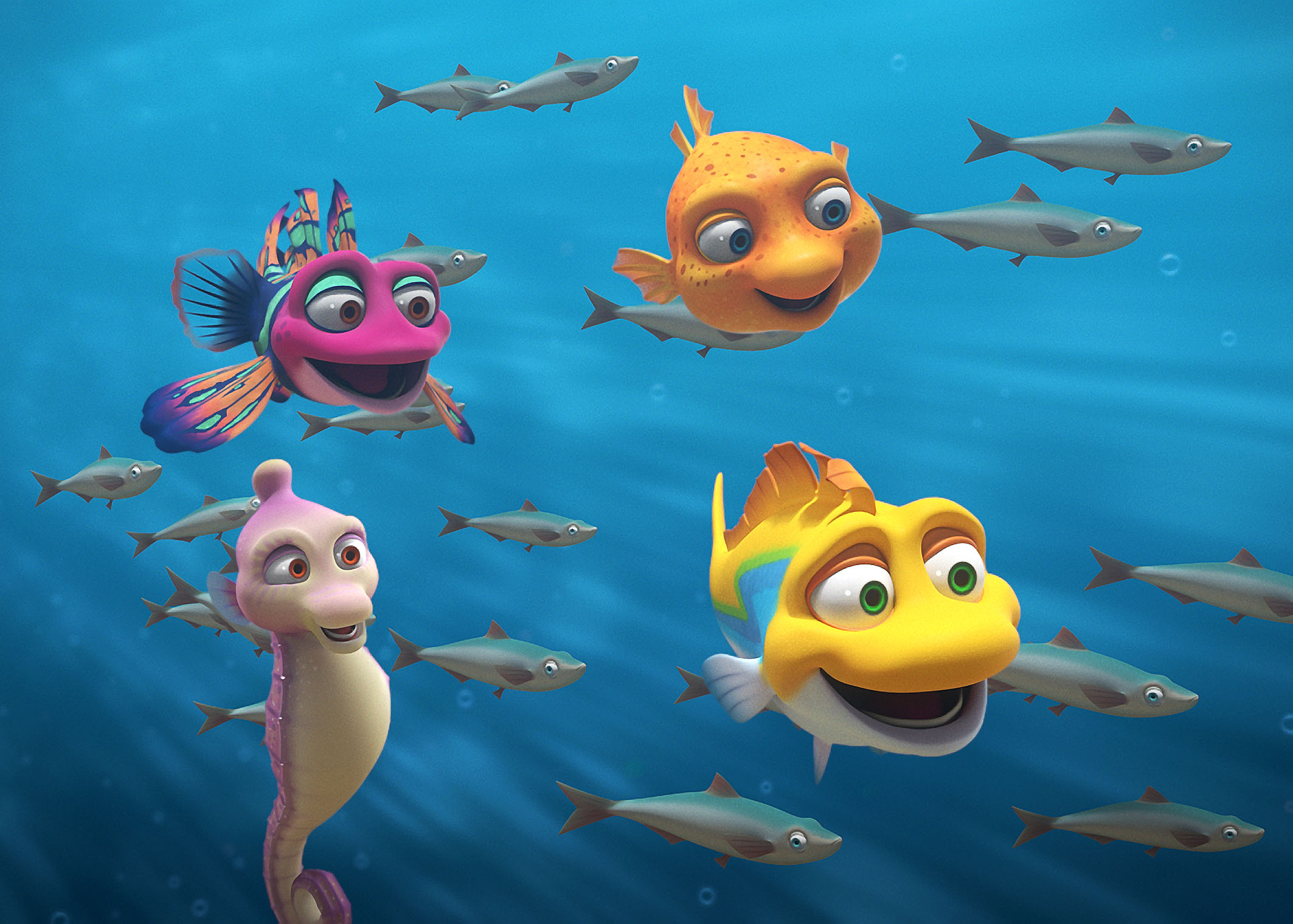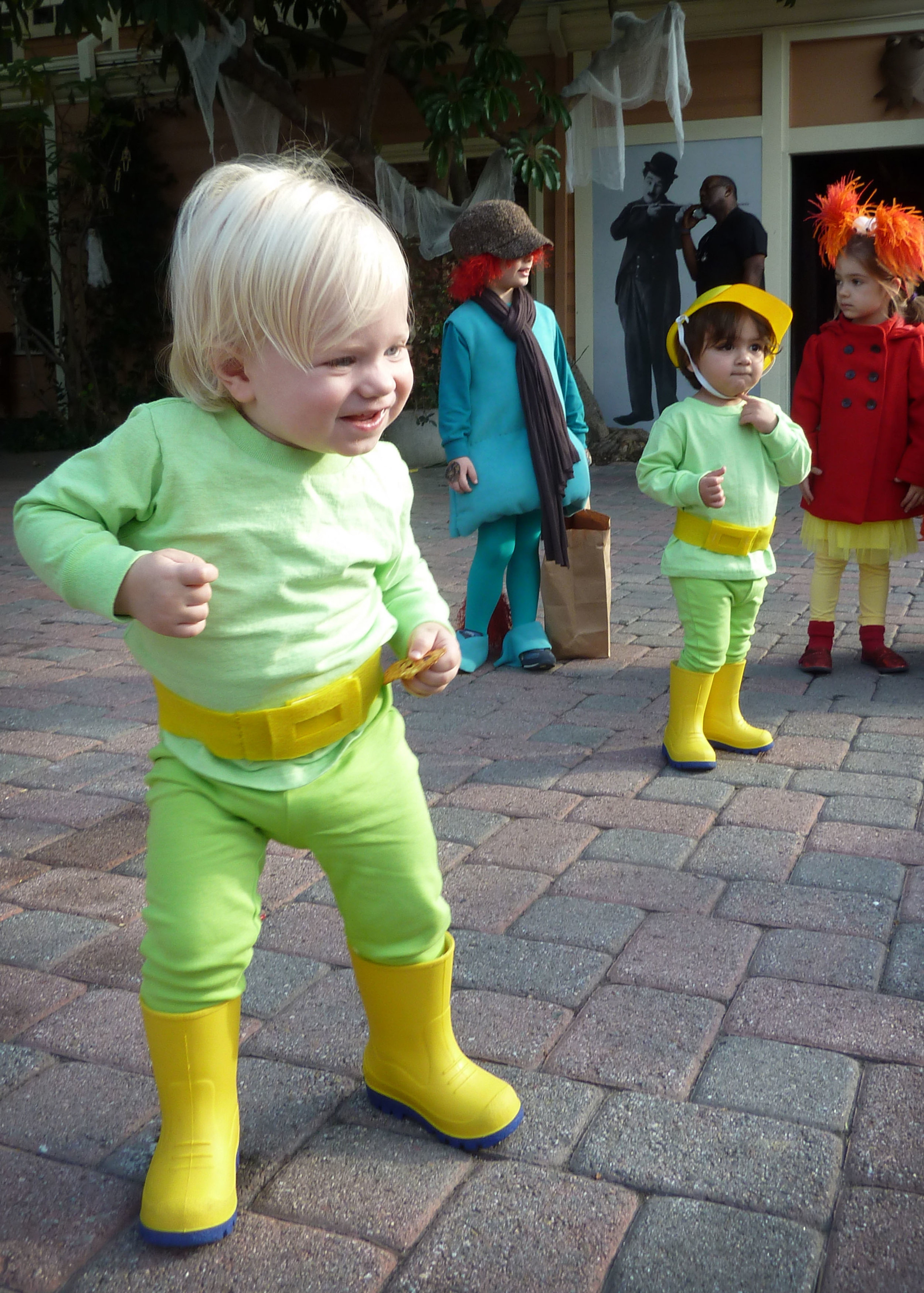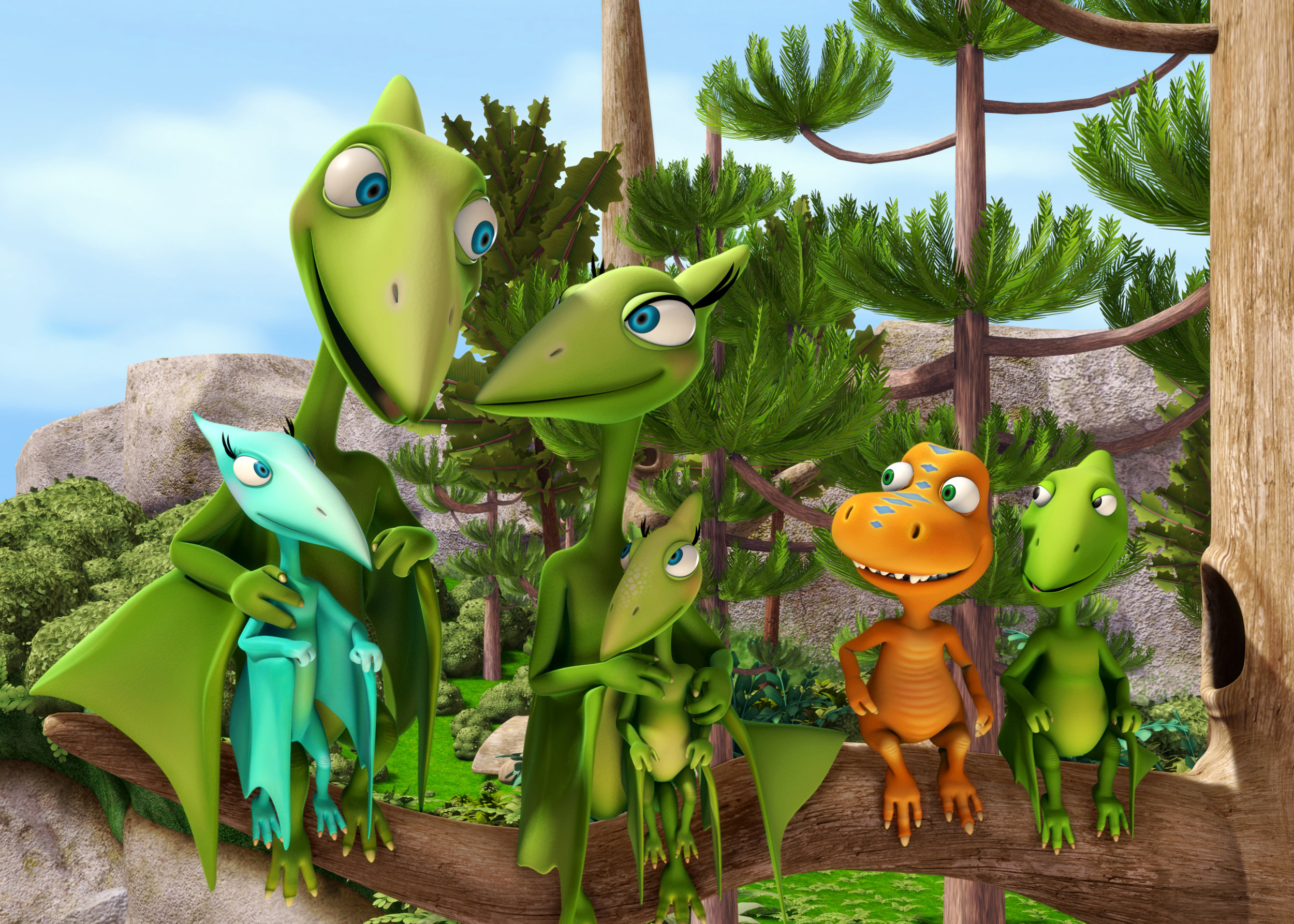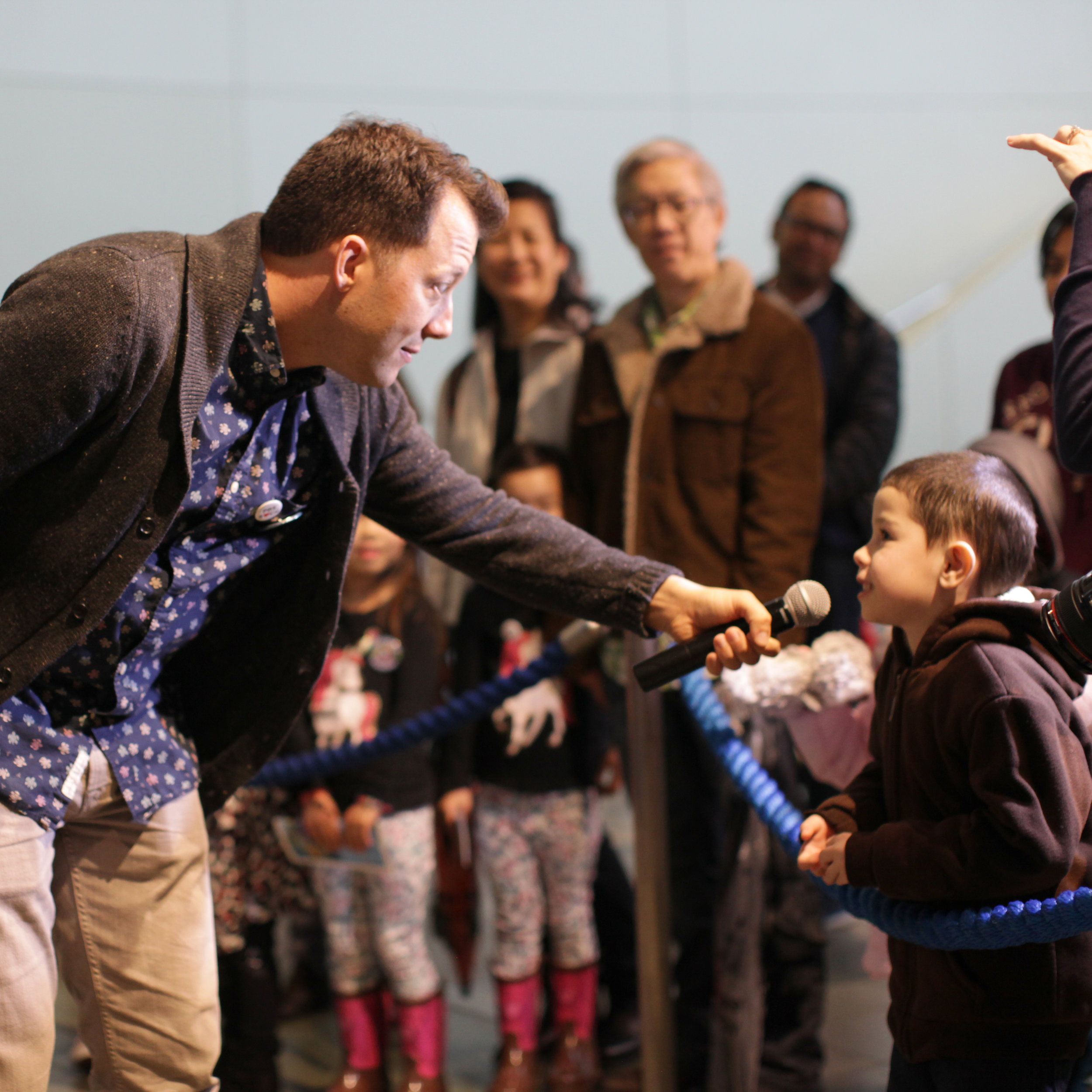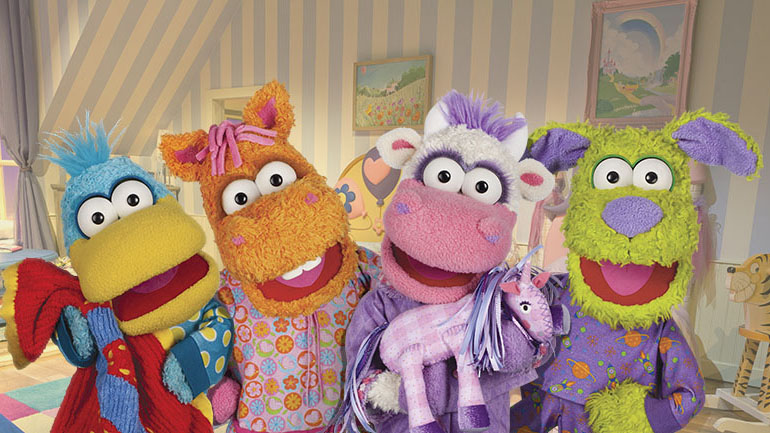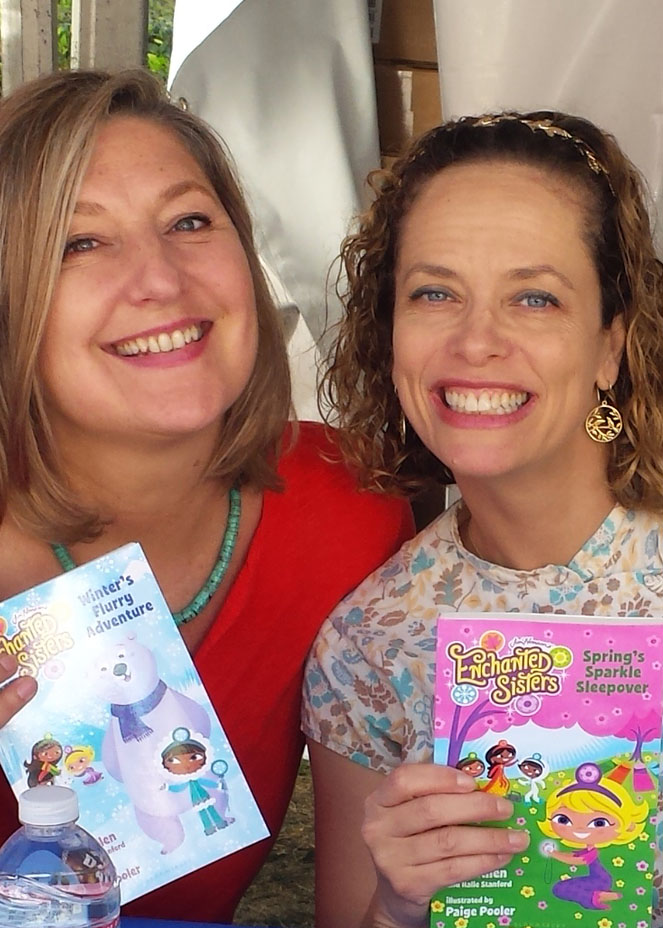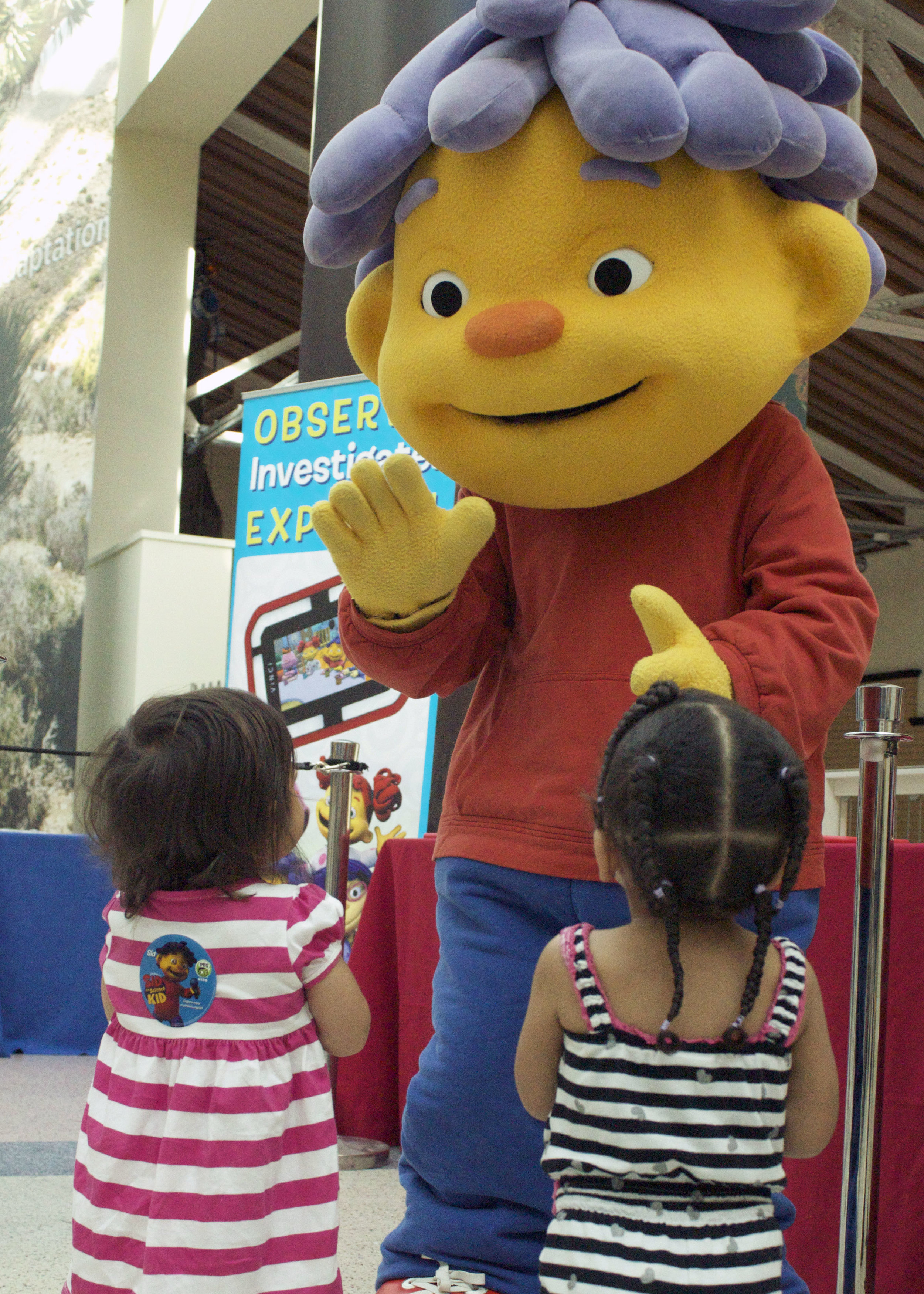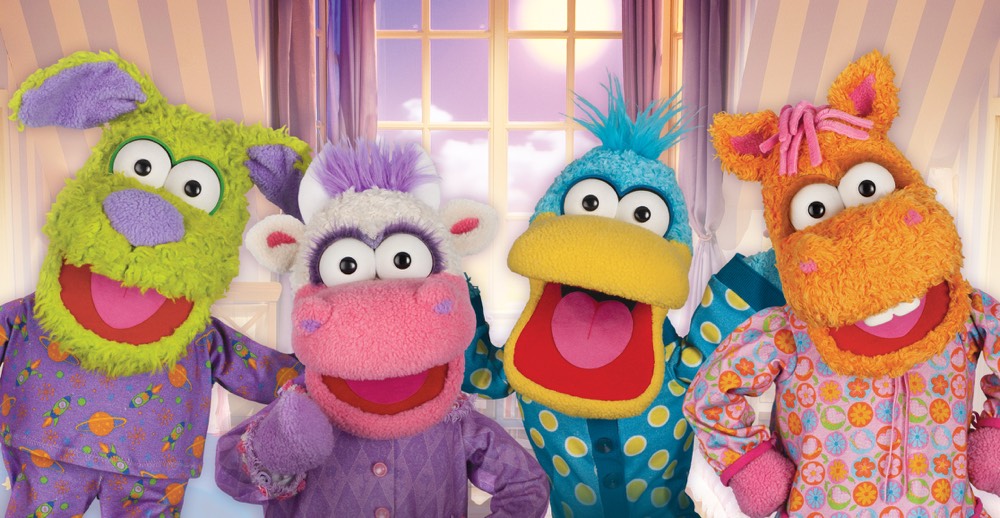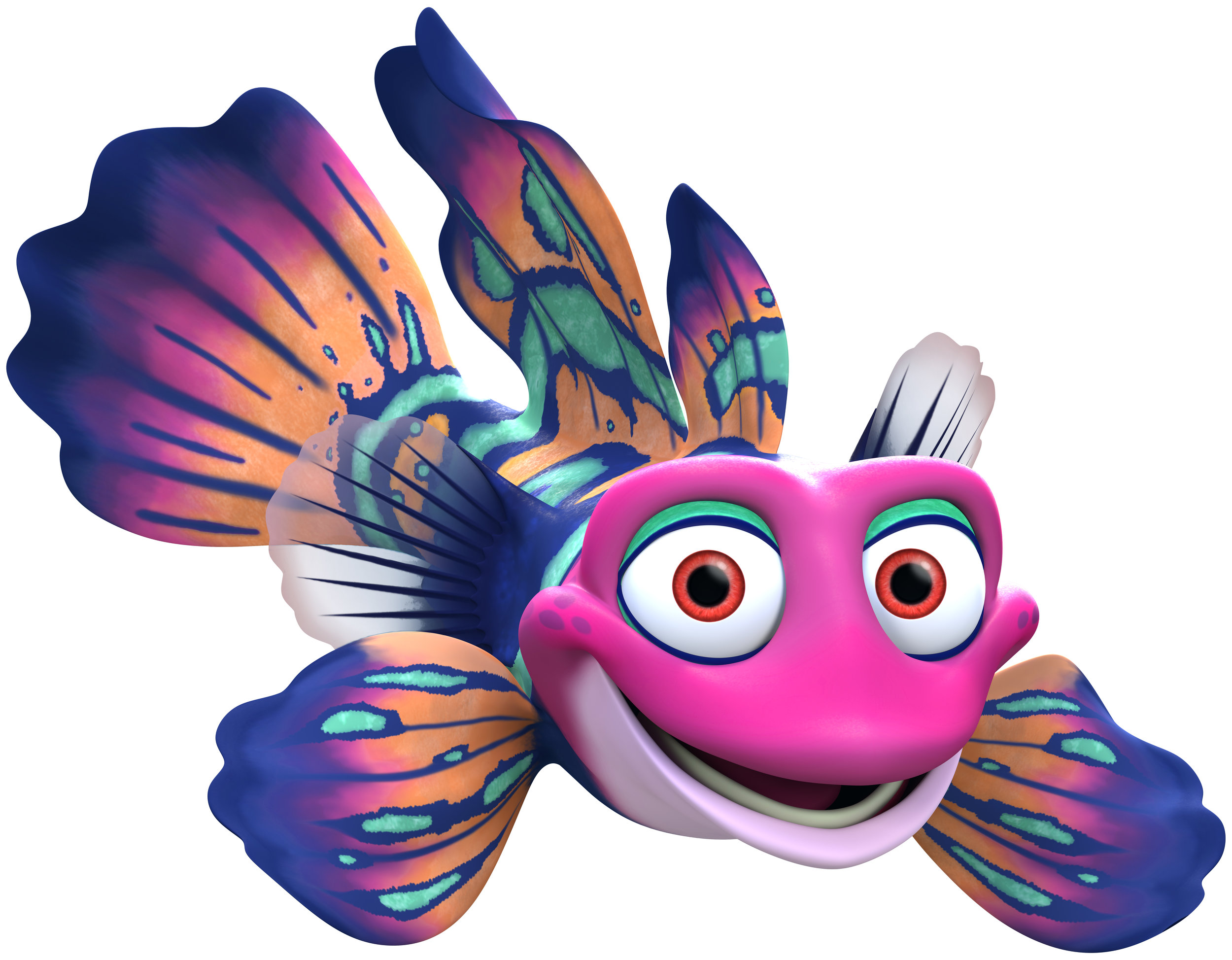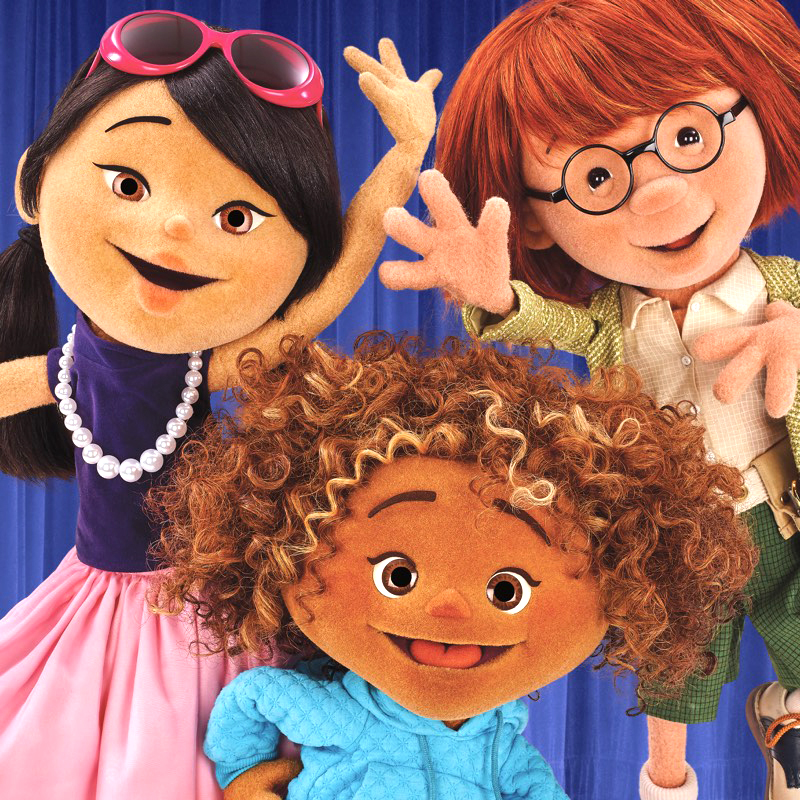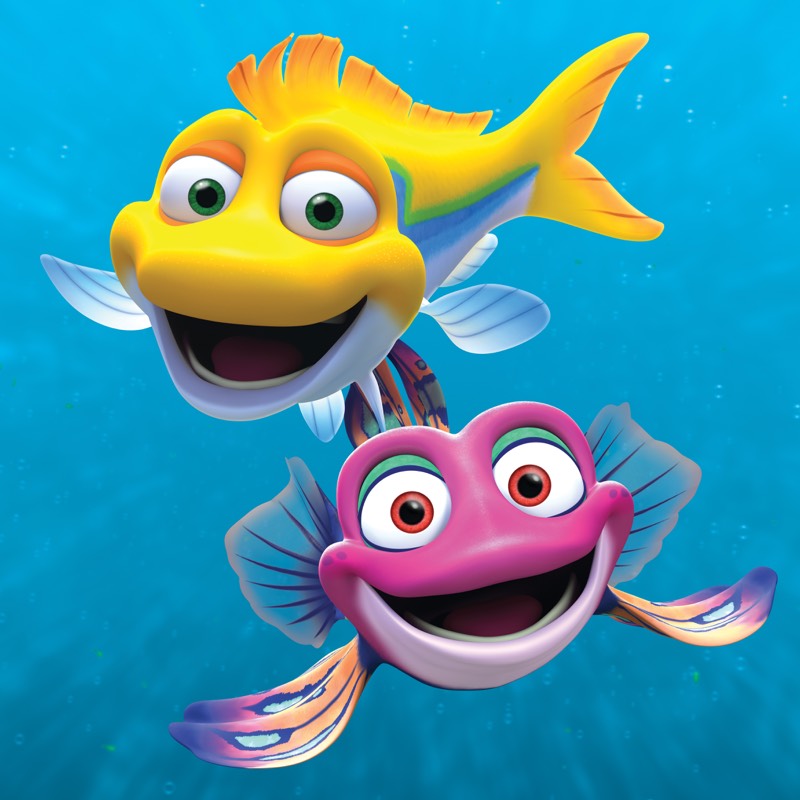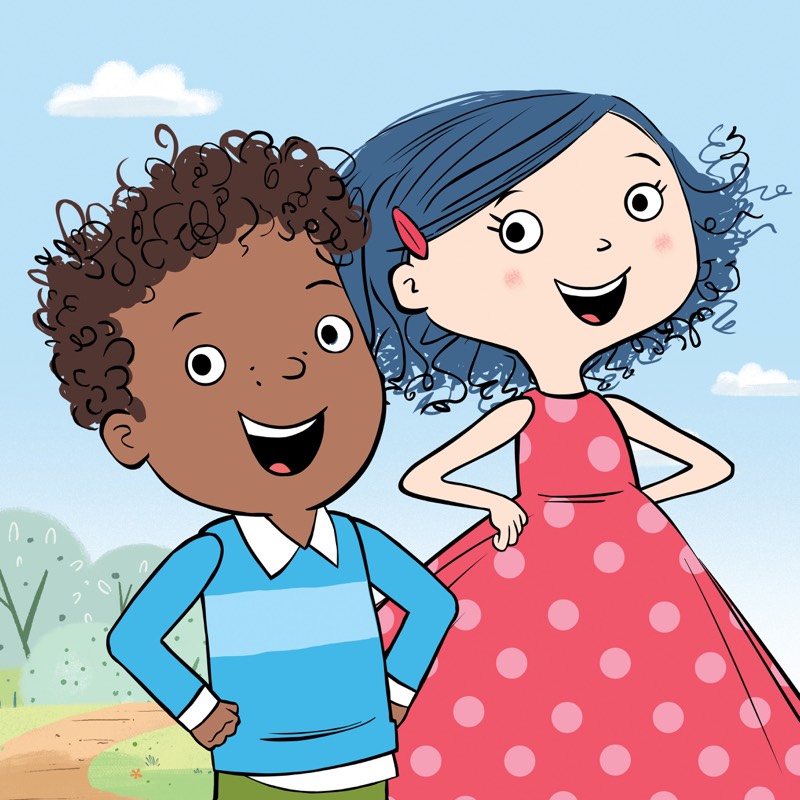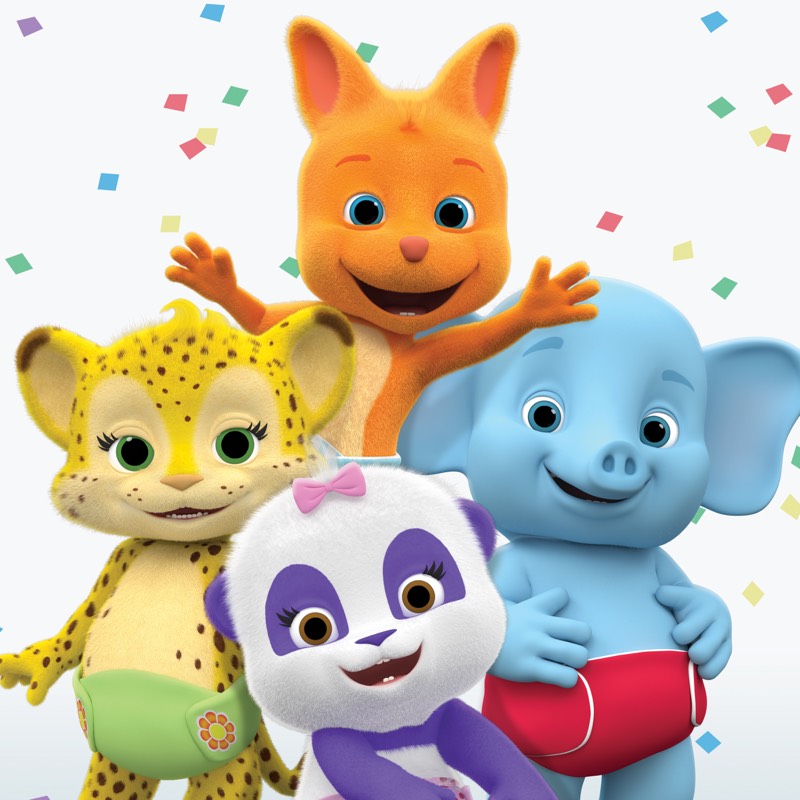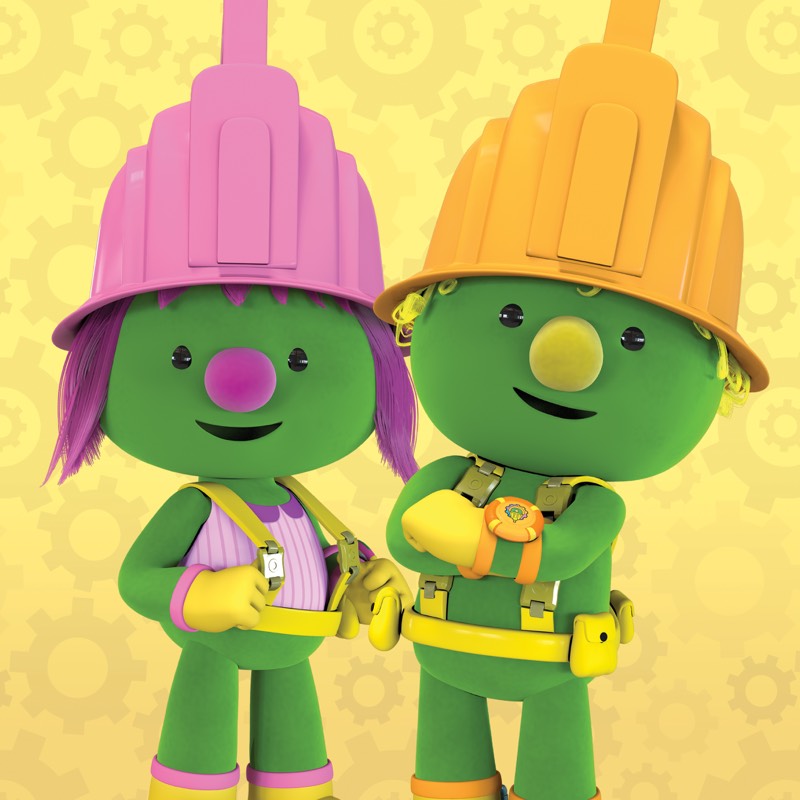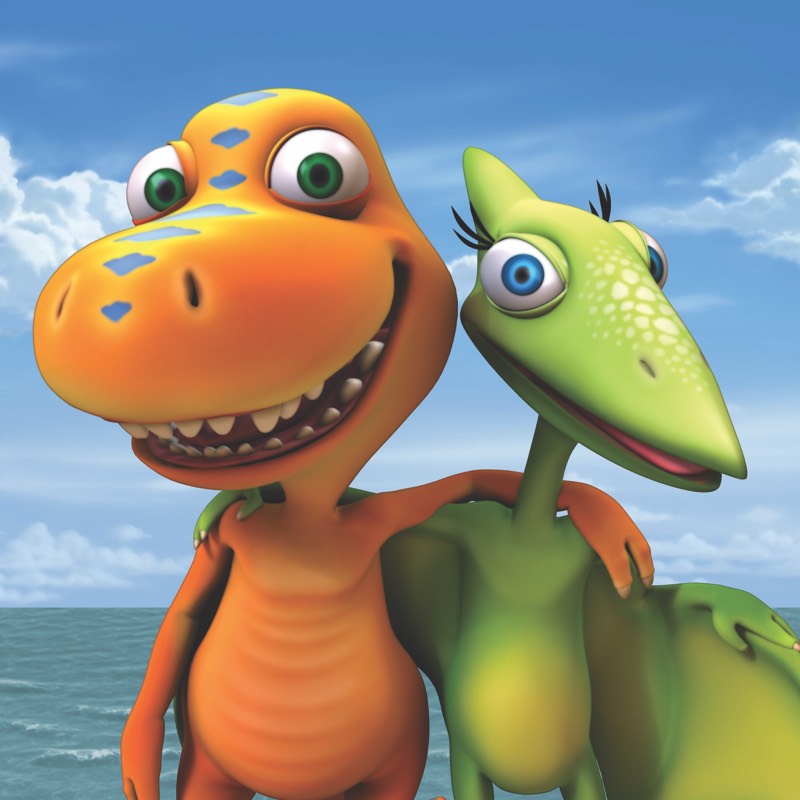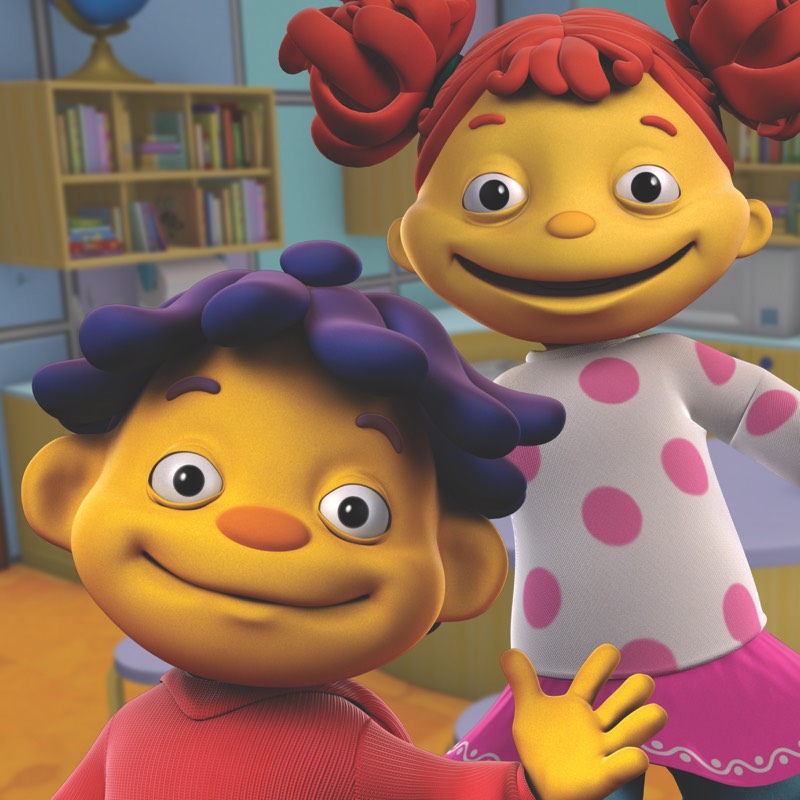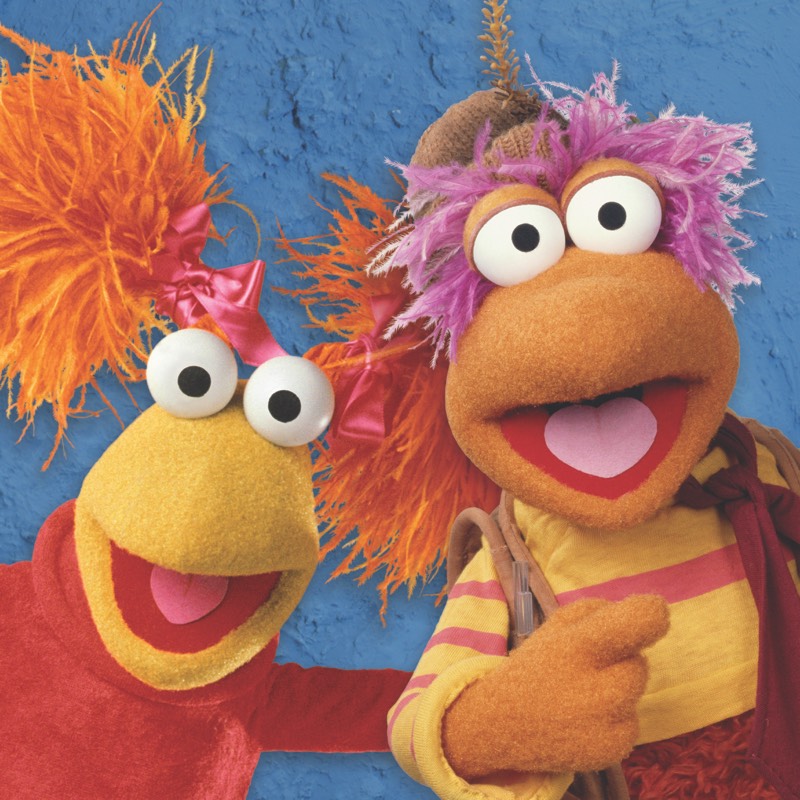From Exploration to Conservation: Engaging your Reeftown Ranger in Watershed Conservation!
By Claire Christensen, Corinne Singleton, Kea Anderson
While producing Splash and Bubbles, we enlisted the researchers at SRI International to help us explore the data around the series and incorporate it into our everyday. The team of incredible researchers HAVE shared a couple of tips on how to get your family and little ones involved in water conservation!
Splash and Bubbles, The Jim Henson Company’s series for young children and their families, builds excitement about the ocean through the animated adventures of four fish friends, the Reeftown Rangers. Parents can build on that excitement to lay the foundation for lifelong watershed conservation. Here are some great, age-appropriate ways to get young children involved in conservation!
Focus on specific actions that you and your children can take. [i] [ii] [iii] Identify ways that your family can protect the waterways in your area, such as by picking up trash along a creek or adding rain barrels or a rain garden to reduce run-off from your yard. Young children can feel overwhelmed by the scale of environmental issues. Helping them do things with clear, understandable ties to local issues helps them see that their actions can make a difference.[iv] [v]
Make it personal. Talk about your family’s personal connections to local waterways—how do you enjoy them together? Then describe how your actions can protect these special places. For example, you might explain, “By picking up this litter, we can help make sure the ducks have a clean place to live so that they can stay healthy and come back every year.” [vi] [vii] [viii] [ix] [x]
Build a sense of community. Participate with your children in community conservation events, such as a beach clean-up or beautification project. Participating in community events is a fun way to spend time with friends and neighbors. Moreover, these events show your child that others engage in conservation, too, and value the local environment like your family does. [xi] [xii]
Do it again and again. [xiii] Children learn new skills and behaviors by practicing, and the same is true for learning to protect the environment. One-time events can also be fun and meaningful, but to help inspire a new generation of conservationists it’s important to do these activities regularly. Find a conservation activity your family enjoys and do it often!
Involving your young children in conservation can be a fun and beneficial way to spend time as a family and make a difference in your community. While you’re cleaning the beach or sorting the recycling, help your child connect what you’re doing to what he or she already knows, and perhaps to what they have seen on Splash and Bubbles. How do you think your actions will affect Splash, Bubbles, and their friends in Reeftown?
[i] Frick, J., Kaiser, F. G., & Wilson, M. (2004). Environmental knowledge and conservation behavior: Exploring prevalence and structure in a representative sample. Personality and Individual differences, 37(8), 1597-1613. This study was conducted with adults. [ii] Falk, J. H. (2005). Free‐choice environmental learning: framing the discussion. Environmental education research, 11(3), 265-280. [iii] Allen, L. B., & Crowley, K. (2017). Moving beyond scientific knowledge: leveraging participation, relevance, and interconnectedness for climate education. International Journal of Global Warming, 12(3-4), 299-312. [iv] Ennes, M., Kubasko, D., & Jones, M.G. Inquiry into action: Ecosystems and animals. Science Scope, 21, 3, 28-40. [v] See successful citizen-science projects for children and families, e.g., Sickler, J. & Cherry, T.M. (2012). Lost Ladybug Project: Summative Evaluation Report. Institute for Learning Innovation: Edgewater, MD. http://www.informalscience.org/lost-ladybug-project-summative-evaluation-report, or The Monarch Larva Monitoring Project, https://monarchlab.org/mlmp/. [vi] Uzzell, D. L. (2000). The psycho-spatial dimension of global environmental problems. Journal of Environmental Psychology, 20, 307-318. [vii] Schultz, P. W. (2011). Conservation means behavior. Conservation Biology, 25(6), 1080-1083. [viii] Schultz, P. W. (2001). The structure of environmental concern: Concern for self, other people, and the biosphere. Journal of Environmental Psychology, 21(4), 327-339. [ix] Mayer, F. S., & Frantz, C. M. (2004). The connectedness to nature scale: A measure of individuals’ feeling in community with nature. Journal of environmental psychology, 24(4), 503-515. [x] Gosling, E., & Williams, K. J. (2010). Connectedness to nature, place attachment and conservation behaviour: Testing connectedness theory among farmers. Journal of Environmental Psychology, 30(3), 298-304. [xi] Cialdini, R. B. (2003). Crafting normative messages to protect the environment. Current directions in psychological science, 12(4), 105-109. [xii] Allen, L. B., & Crowley, K. (2017). Moving beyond scientific knowledge: leveraging participation, relevance, and interconnectedness for climate education. International Journal of Global Warming, 12(3-4), 299-312. [xiii] Chawla, L. (2009). Growing up green: Becoming an agent of care for the natural world. Journal of Developmental Processes. 4:1, 6-23.

